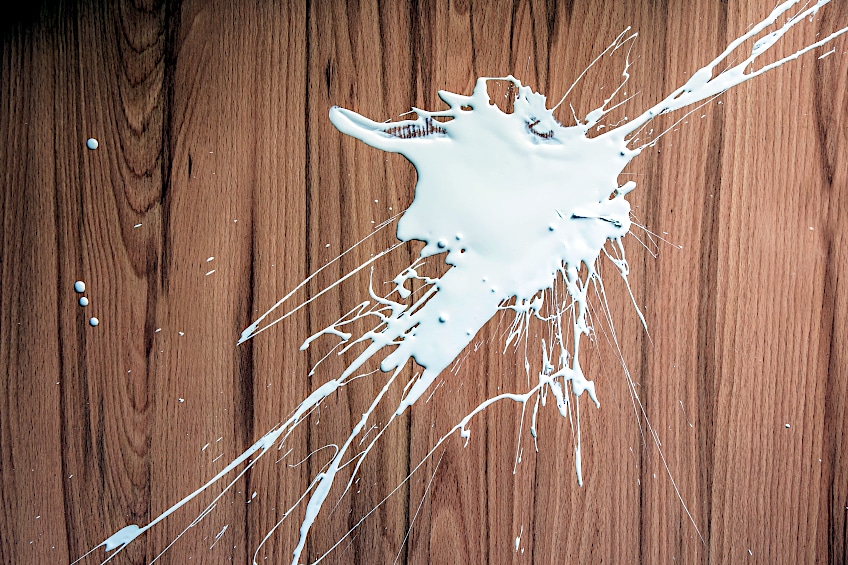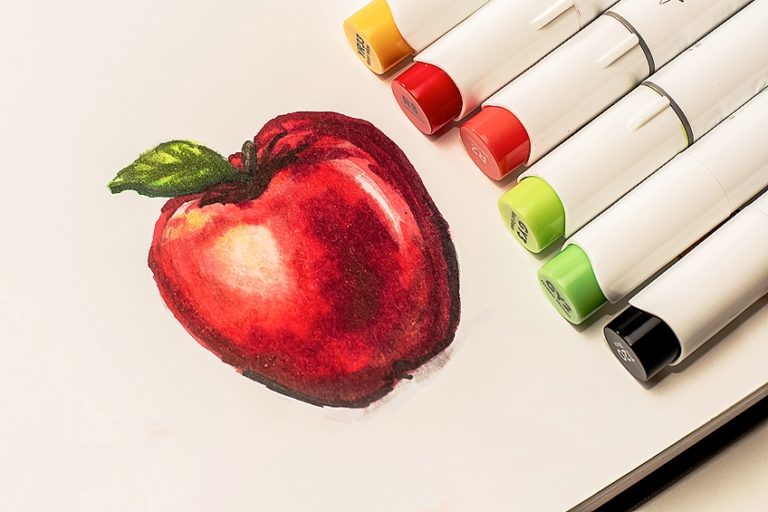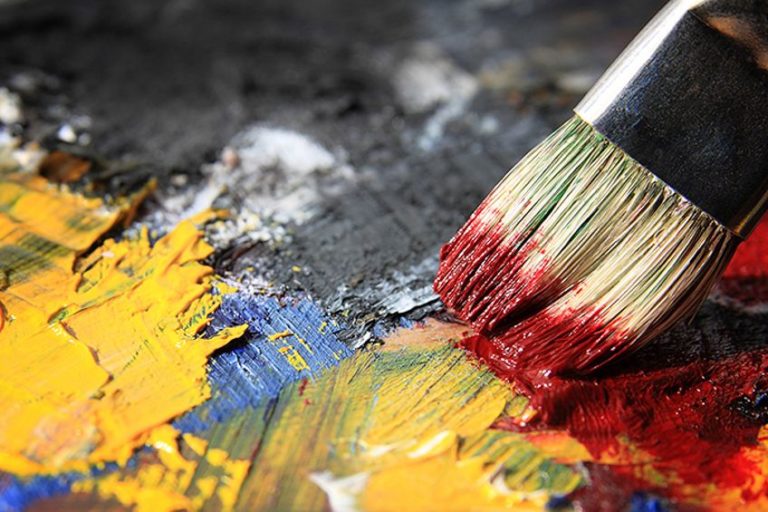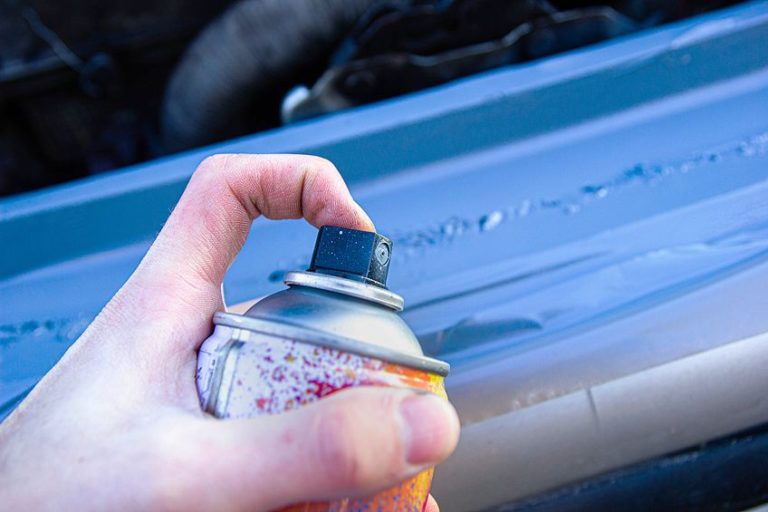How to Remove Acrylic Paint From Wood – Top Cleaning Tips
This post may contain affiliate links. We may earn a small commission from purchases made through them, at no additional cost to you.
Acrylic paint is widely used for a variety of purposes. Acrylic paint can be applied to multiple materials, including metal, wood, and even plastic. As a result, having an accidental acrylic paint spill or splatter on your wood trim, furniture or floors is not an unusual occurrence. Which brings us to the commonly asked question: how to get acrylic paint off wood? This article will describe how to safely remove acrylic paint from wood with all the step-by-step procedures you need to follow.
What Is Acrylic Paint?
Acrylic paint is a paint that is composed of pigments suspended in a medium. Acrylic paint is highly durable and becomes water-resistant after drying. Acrylic paint has multiple applications. It also has unique qualities that cannot be easily achieved using other mediums. Since it is water-based and low in toxic components it is the ultimate choice for painting interiors. This does mean however, that in the course of decorating your house, you may end up with acrylic paint spilled or splattered on your hardwood floors or wooden furniture. Removing those spills without damaging your precious wood requires a bit of know-how.
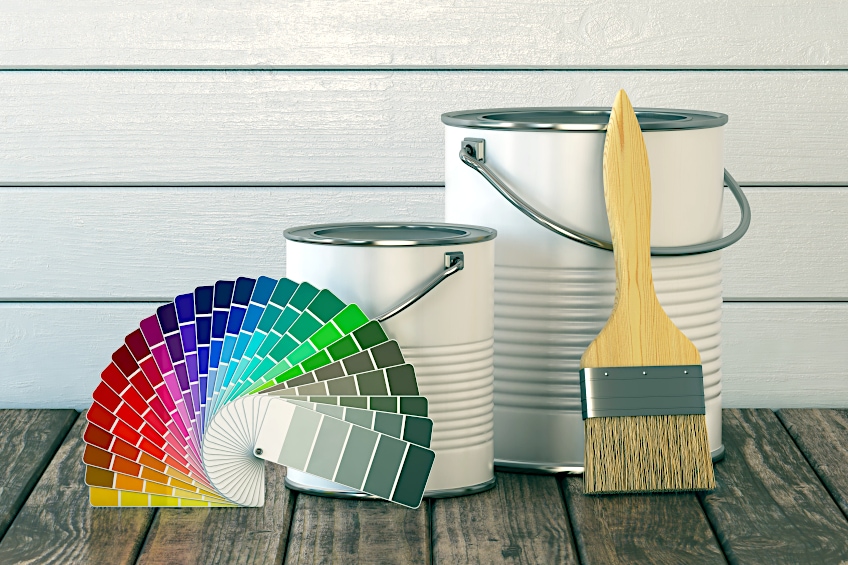
What Removes Acrylic Paint?
Removing acrylic paint from your surfaces will not be a difficult task if you have the appropriate tools on hand. There are several methods that you may use to get acrylic paint off wood. The solutions below will help you effectively remove acrylic paint from your surfaces.
Denatured Alcohol
Denatured alcohol, which does not contain any water, is an excellent solvent for removing acrylic paint from surfaces. Instead, it includes very effective solvents such as ethyl and methyl alcohol. However, due to the presence of methanol, which is a very toxic and combustible material, this solution must be handled with care.
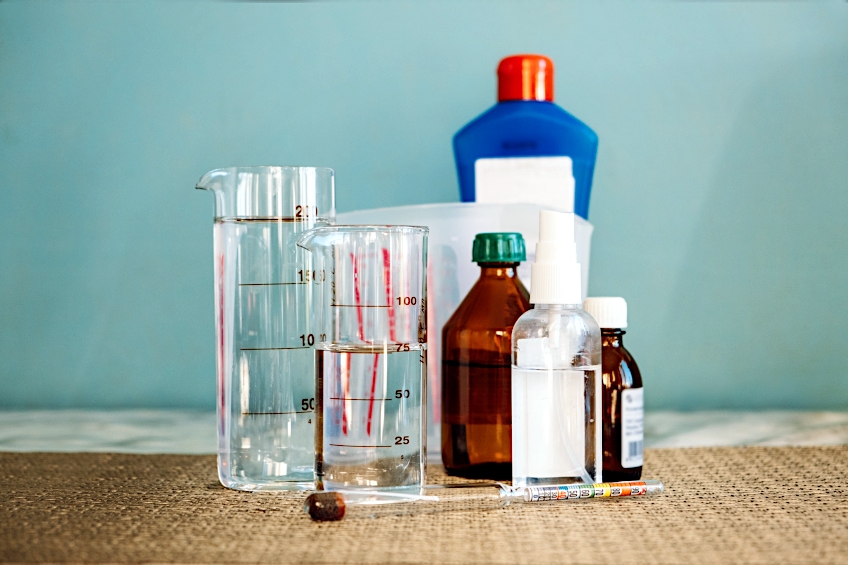
Ammonia Solution
Acrylic paint can be removed from materials with this powerful chemical, which can be used on both dry and semi-dry surfaces. It is effective for cleaning spills on non-porous materials like glass, plastic, and metal, among other things. The ammonia solution works by raising the pH of the acrylic emulsion, which helps to stabilize the acrylic paint. Some ammonia solutions contain detergents that aid in the retention of acrylic suspended particles with water throughout the cleaning process.
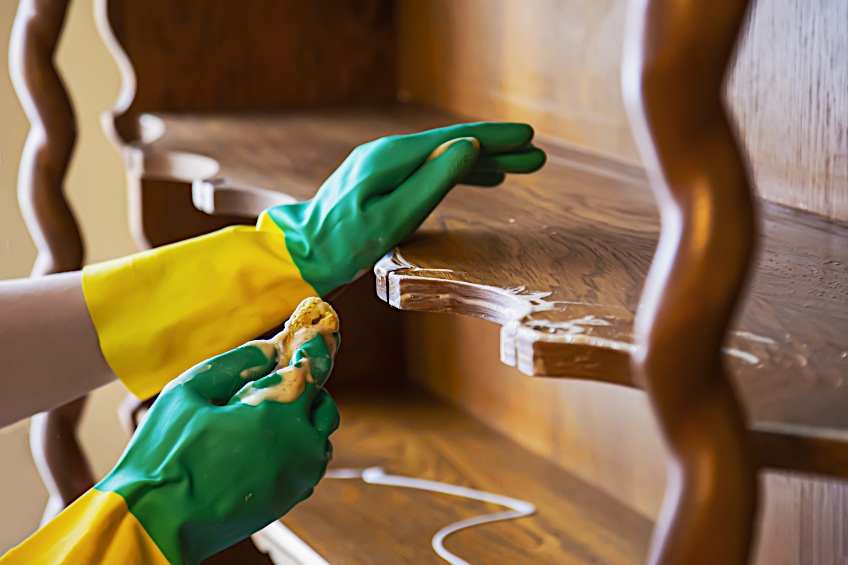
When using an ammonia solution you must exercise extreme caution since the fumes have the potential to trigger allergic reactions. In addition to removing acrylic paint from surfaces, you can also use an ammonia solution to clean your paintbrushes and airbrushes.
Rubbing Alcohol
This is an inexpensive and readily available substance that can be used to remove acrylic paint from your surfaces. This solution, which is frequently referred to as isopropyl solution, is efficient for removing dried acrylic paint. It is also effective for eliminating non-porous compounds, much like ammonia. Its solvent action affects acrylic binders, allowing it to remove acrylic paint stains.
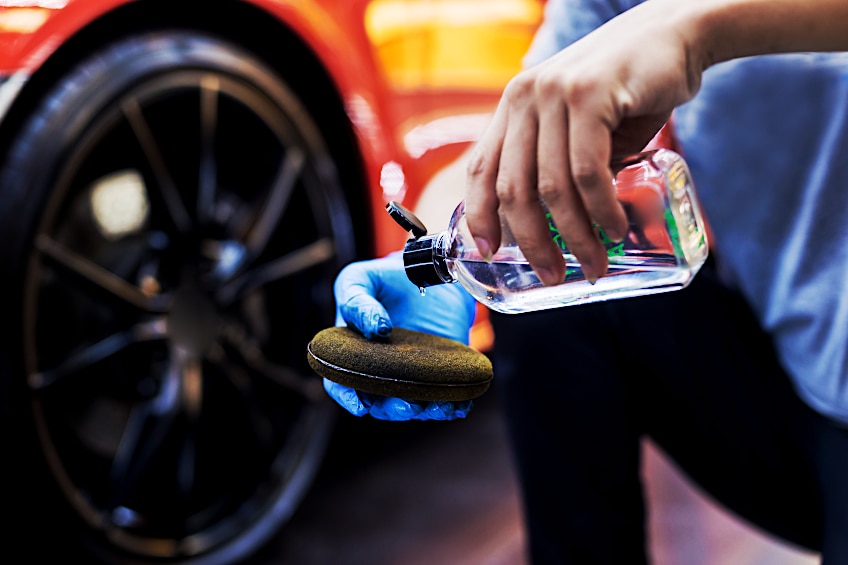
Acetone
This is a very strong product that is quite effective when it comes to eliminating alcohol from difficult-to-reach locations. It is not recommended for use on plastic or fabric surfaces due to the solid nature of the chemical used. Surfaces such as wood, metal, and glass that are not porous respond well to this product.
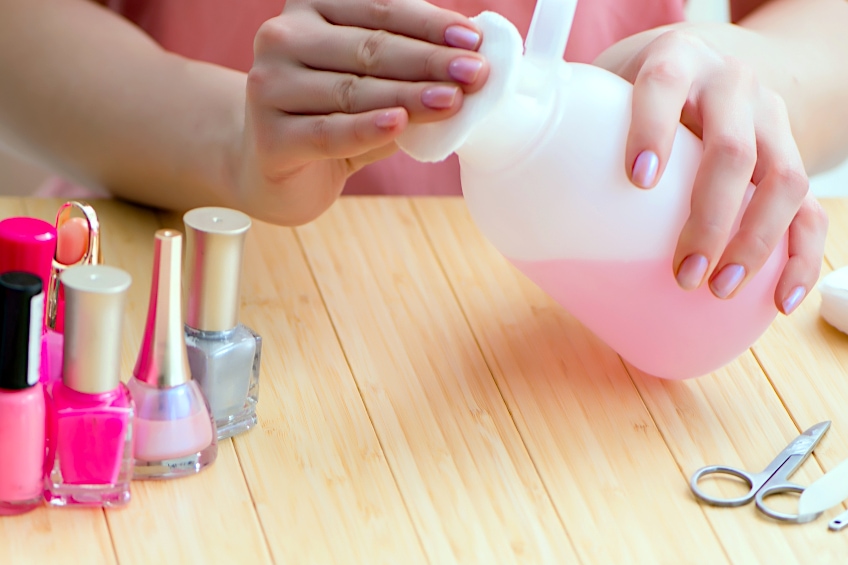
Solvents
This method can be used to readily remove acrylic paint from different kinds of surfaces. Solvents must be handled with caution as they may contain toluene and methanol. These two substances are toxic and need to be handled with extra care.
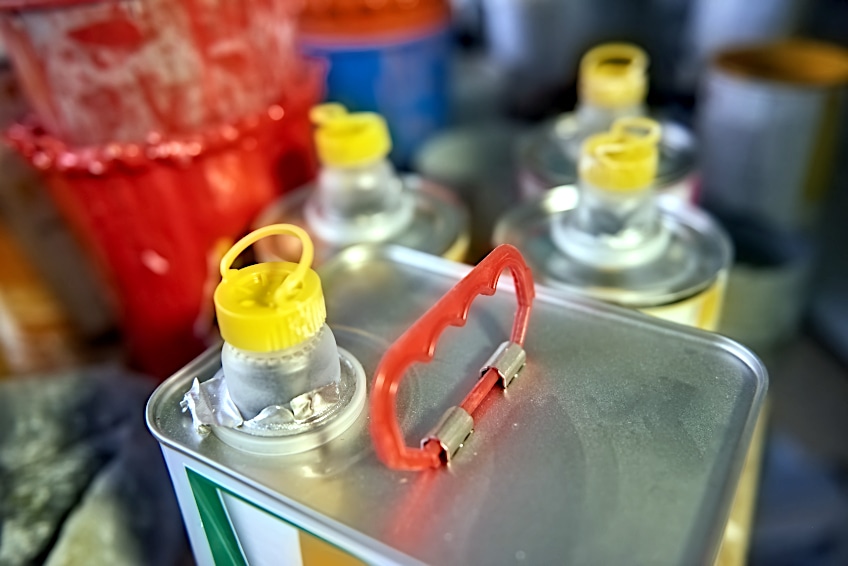
Best Methods for Removing Acrylic Paint from Wood
Knowing how to remove acrylic paint from wood is essential if you want to remove paint from your wooden surfaces without causing damage to them. Acrylic paint removal shouldn’t be difficult if you follow the proper procedures and use the appropriate tools and equipment. Regardless of whether the stain is dry or wet, several methods are both simple and affordable to use.
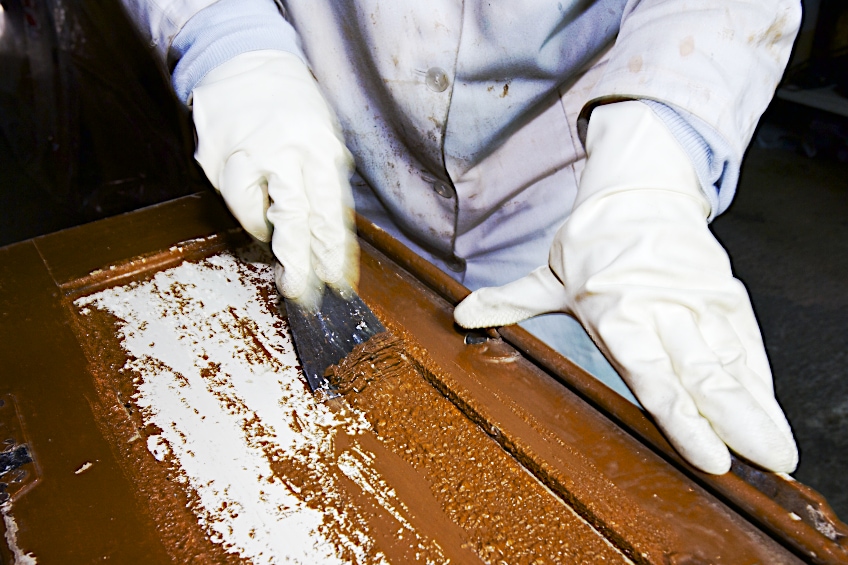
Using Acetone or Rubbing Alcohol
The use of this method is highly recommended if you want to remove acrylic paint from wood. Acetone is the primary ingredient in many nail polish removers, and it will also work effectively for removing acrylic paint from wood. Cleaning solutions such as isopropyl alcohol, on the other hand, are effective and inexpensive.
- Apply the alcohol or acetone to a towel and massage the area until the spots are removed. First, sprinkle some rubbing alcohol on the cloth and use this cloth to wipe the surface. You should see that the acrylic paint is beginning to peel off as you wipe it since it is water-based acrylic paint
- To clean the paint spots, you will have to scrape them off thoroughly using a paint scraper. Make sure to do it gently and not with a lot of force to avoid damaging the wood.
- After you have fully removed the paint from the area, use a moist towel to clean the area again. As you clean, you may add a little amount of soap to the cloth.
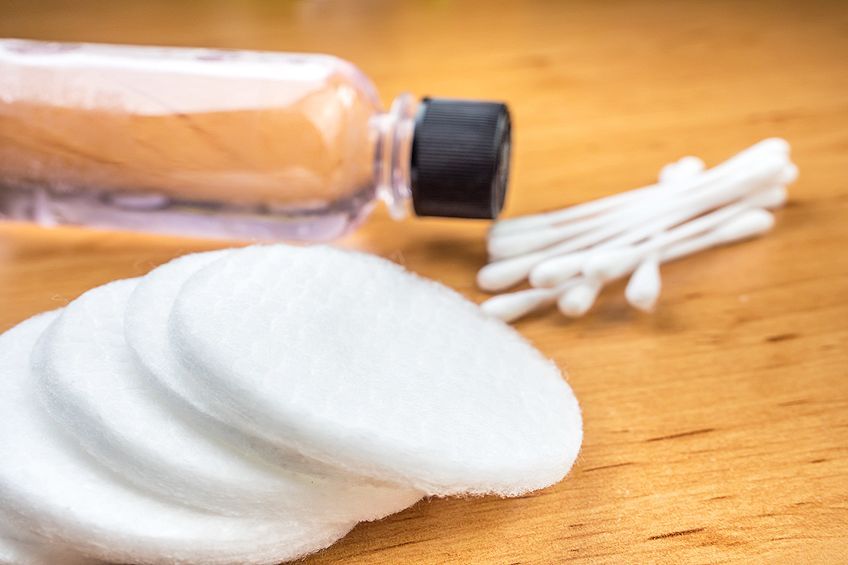
Using a Heat Gun
Heat guns are another way for removing acrylic paint off wood that may be used to great effect. This approach entails heating the stained area with a heat gun until it reaches a very high temperature. The materials that you need here include breathable gear, a clean towel or cloth, and rubber gloves.
- First, put on a pair of thick gloves to protect your hands.
- Clean the affected area with a dry, clean cloth to remove any dirt or debris that has accumulated on the surface of the wood. After that, connect the heat gun’s power line to the device to get it running.
- Slowly move the heat gun across the affected area until you see the paint beginning to bubble. This should just take a few seconds.
- As soon as you notice paint bubbles forming, you must stop and remove the paint with a delicate brush to prevent further damage. You wouldn’t have to resort to force.
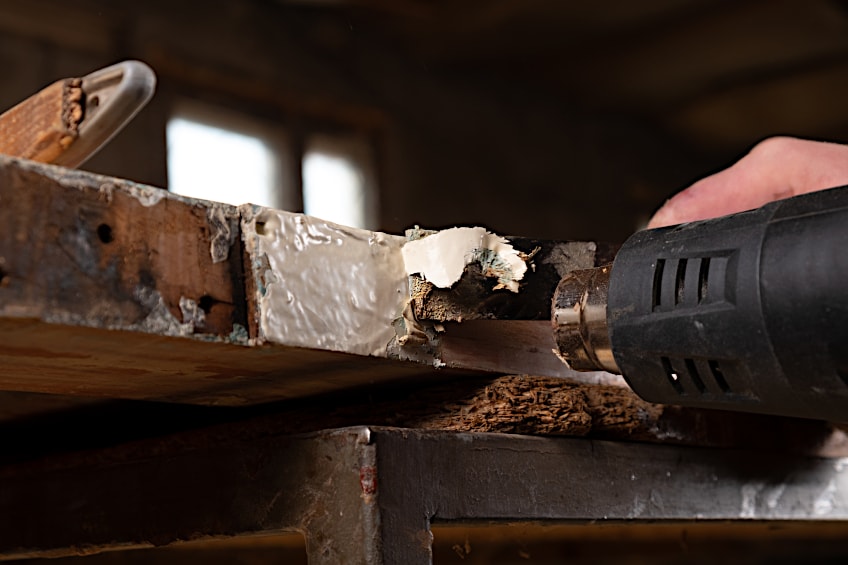
Using Paint Stripper
Paint strippers function by removing the acrylic paint from wood surfaces that have been painted. They are an excellent method of removing paint without damaging the surfaces in any way. There are many different kinds of paint strippers available; choose the one that is specifically advised for wooden surfaces.
- Begin by cleaning the stained area with a clean cloth to eliminate any dirt or debris before continuing. After cleaning, use a putty knife to scrape away the acrylic paint can the surface. You should make sure not to apply force to remove the paint.
- After scraping away the paint with a putty knife, apply the paint remover to the stained area using the putty knife. Following the application of the stripper, you must wait for a period of time for the stripper to begin working its wonders.
- When all of the paint has been removed, wipe the area with a clean towel, a bowl of water, and a little dish soap. This will assist you in getting rid of any extra paint stripping solution as well as any remaining discoloration.

How to Remove Dried Acrylic Paint from Wood
Acrylic paint dries in a relatively short period. As a result, removing dried acrylic paint from woody surfaces may be a time-consuming and difficult task. However, if the appropriate options are chosen, this will work quite well.
Using sandpaper is another effective method you can use to remove dried acrylic paint from wood. Sanding aids in the removal of any paint or debris that may have accumulated on the surface and leaves it smooth. Based on how big the acrylic paint stains are, a sander may be used, or you can do everything manually. If you want to use this method, make sure you have gloves, goggles, a dust mask, and fine-grit sandpaper on hand.
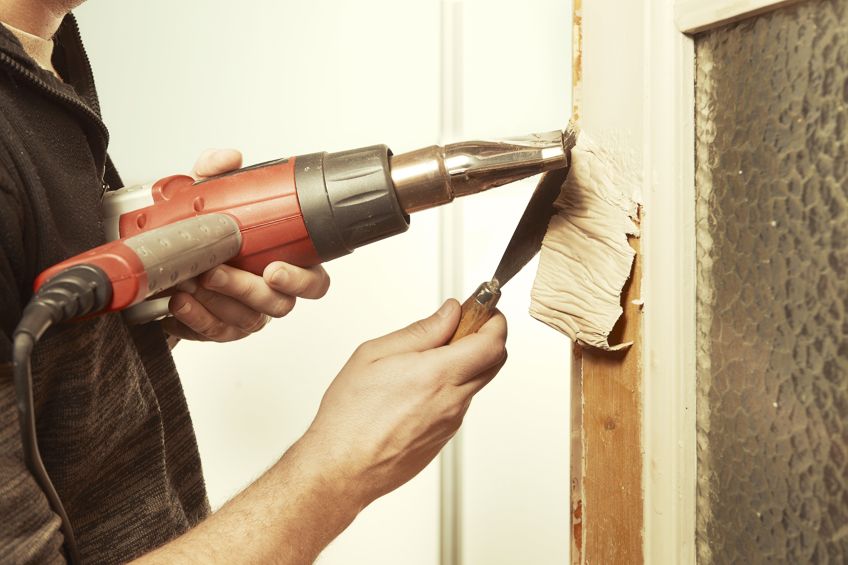
Prepare the Work Area
To begin, wipe off the surface using a cloth. You should use fine-grit sandpaper such as 80 fine grit paper when dealing with little spots of acrylic paint since they will show up more clearly.
Sand the Surface
Once you’ve done that, take your sandpaper and rub it around the surface in a circular manner until the paint begins to peel away. The rationale for utilizing fine-grit sandpaper instead of course grit sandpaper is because it does not cause harm to the finished wood, as opposed to coarse grit sandpaper.
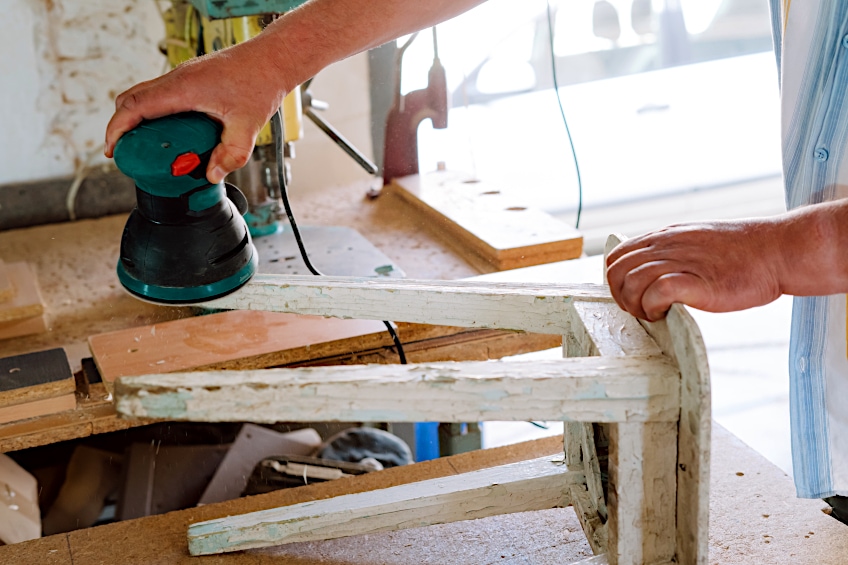
Clean and Apply Sealant
When you observe that there is no longer any stain on the surface, it is time to cease sanding the surface. You should conclude by cleaning up the surrounding area. After sanding, you may apply a new coat of varnish to the hardwood surface, depending on its condition.
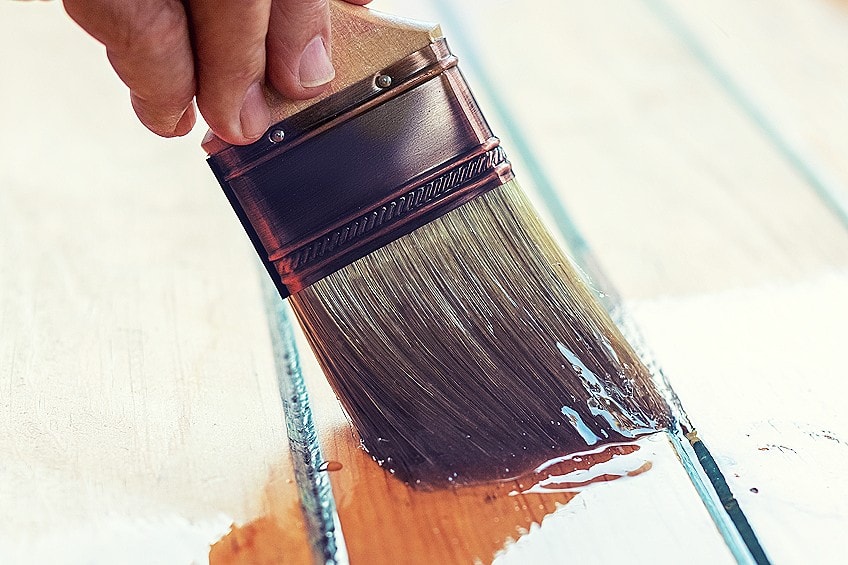
How to Remove Wet Acrylic Paint from Wood
The method described in this section is only effective if the paint is still wet, which means you must do it as soon as the paint comes into contact with the wood. Regardless of the size of the stain, you’ll want to make sure you have a cleaning cloth, mild detergent, and a bowl of water on hand to get the job done. To clean, you should follow the methods outlined below:
- Pour a small amount of mild detergent into a basin of water.
- Dip your cloth in the solution for a few minutes.
- Clean your wooden surfaces with the soaked cloth.
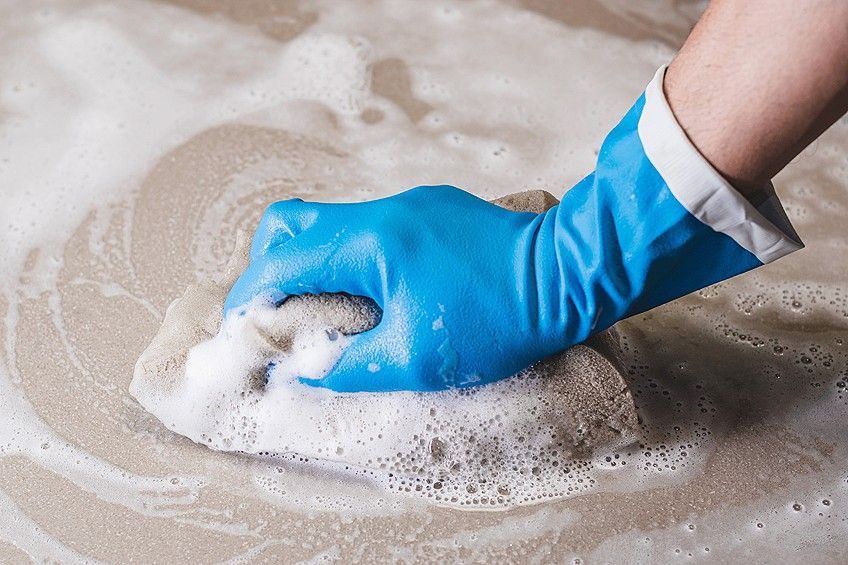
You should be able to remove wet acrylic paint in 20 minutes or less. However, if it takes longer than that, it means that these measures are ineffective and that you may need to use more drastic measures.
How to Get Acrylic Paint off Hardwood Floors
Getting rid of acrylic paint stains from hardwood floors is one of the most effective methods of preserving their lustrous appearance. Removing acrylic paint from a hardwood floor without damaging the finish is no easy task. This section explains all the steps you need to follow to safely get acrylic paint off hardwood floors.
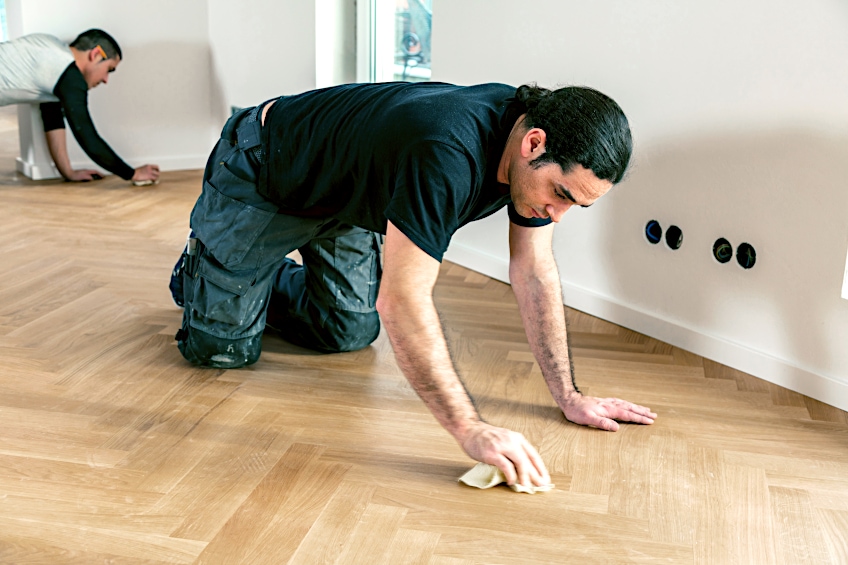
Materials Needed
Having the right materials is important to ensure you get effective results. The following are the materials that you will need to get acrylic paint off hardwood floors.
- Paper towel
- Denatured Alcohol
- Clean rags
- Dull knife
- Water
- Paint thinner
- Dish wash soap
- Scrub brush
- Cleansing pads

Prepare the Hardwood Floor
The first step in doing any kind of maintenance on your hardwood floor is to prepare the surface of your flooring. This involves cleaning the surface and removing any dust, grime, or grit that may have accumulated on the surface for the acrylic paint to be visible. Before using commercial solvents to remove paint from hardwood, always attempt alternative non-chemical techniques of removing paint from hardwood first. The methods explained here are extremely successful for removing paint off wood floors.
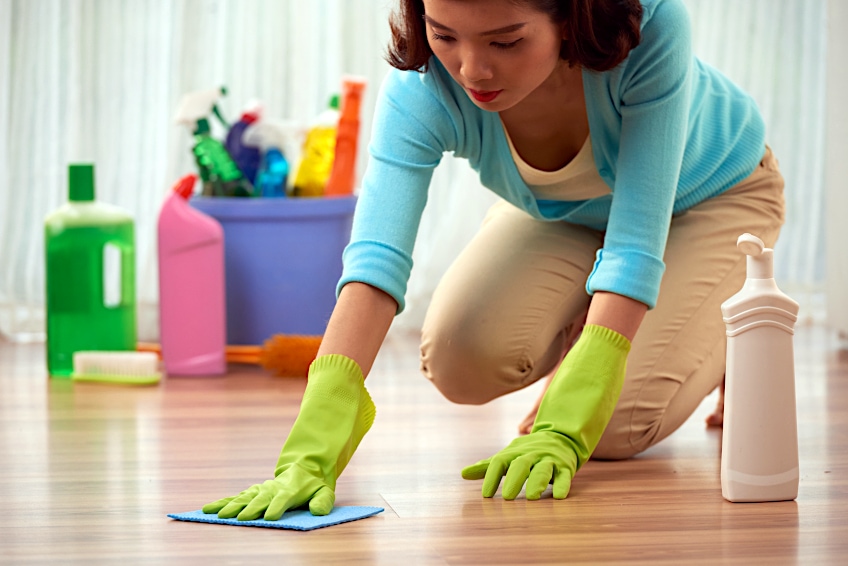
Scrape off the Paint
This is a procedure that is excellent for removing water-based paints off surfaces. The paint may be removed from this area using a plastic putty knife, which will not damage the hardwood flooring. Resist the temptation to use a metal scraper at all costs, but you can use a pull scraper to access spots that are difficult to reach, provided you do not apply it too aggressively.

Heat guns should never be used to remove paint from hardwood floors since they can damage the finish. You should also avoid scraping the floor too vigorously as this can ruin your finish.
Chemicals for Removing Acrylic Paint from Hardwood Floors
Several methods can be used to get acrylic paint off hardwood floors. Some of these include using detergents, denatured alcohol, paint thinner, paint removers as well as cleansing pads. The method you choose can be determined by the readily available materials.
Mild Cleaning Detergent
Another effective way to remove acrylic paint off hardwood is to apply a drop of detergent to a moist piece of paper towel and use it to soak every region of the paint completely. Back and forth scrubbing with a scrub brush is recommended, followed by wiping away any leftover paint that has collected on the wood floor. The paint will become softer because of the softening effect of the soapy water.
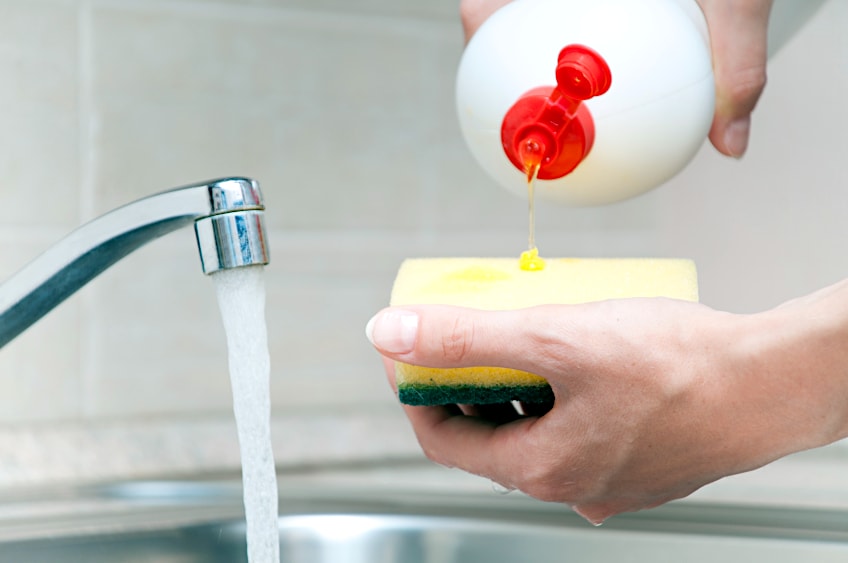
Commercial Paint Removers
When it comes to removing dried paint from hardwood floors, this method works well. It is a more expedient method of removing dried paint from the hardwood floor. The paint remover must be applied directly to the dried paint using cotton swabs and allowed to soak for about 15 minutes before being removed.

Make sure to avoid applying the remover to areas that do not have acrylic paint. When wiping, use a paper towel or cloth. You should wipe away the damaged paint and any remaining remover liquid. If you find that the removal process has left your floor with an oily residue, clean it thoroughly with soapy water to prevent creating a slip-and-fall danger.
Denatured Alcohol
This is a good DIY option. To use this method, you need to have a cloth rag and pour some denatured alcohol on the stain. Next, soak the paint for approximately 20 to 30 minutes, allowing the paint to absorb the alcohol making it easy to remove the acrylic paint. A scrub brush must be used for scrubbing away the paint. When you’re through, be sure to leave a dry area in your wake.
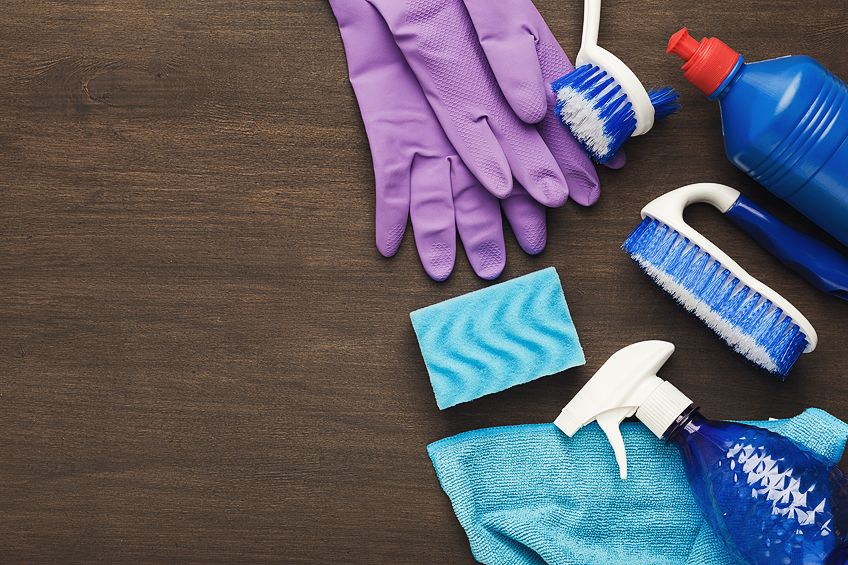
Alcohol-Based Cleansing Pad
You may also remove paint from your surfaces by wiping them down with an alcohol-based washing pad. To scrub the stains, a cleansing pad can be used. When the cleaning pad becomes dry, replace it with a fresh one until all of the paint has been removed from the floor.
Paint Thinner
When it comes to removing acrylic paint from hardwood, this method should never be your first option. This is because the thinner has the potential to destroy the finish. Ensure that the room in which you’ll be working has enough ventilation. Dip a small section of cloth in the thinner and massage it on the stained surface until all of the paint has been removed thoroughly.
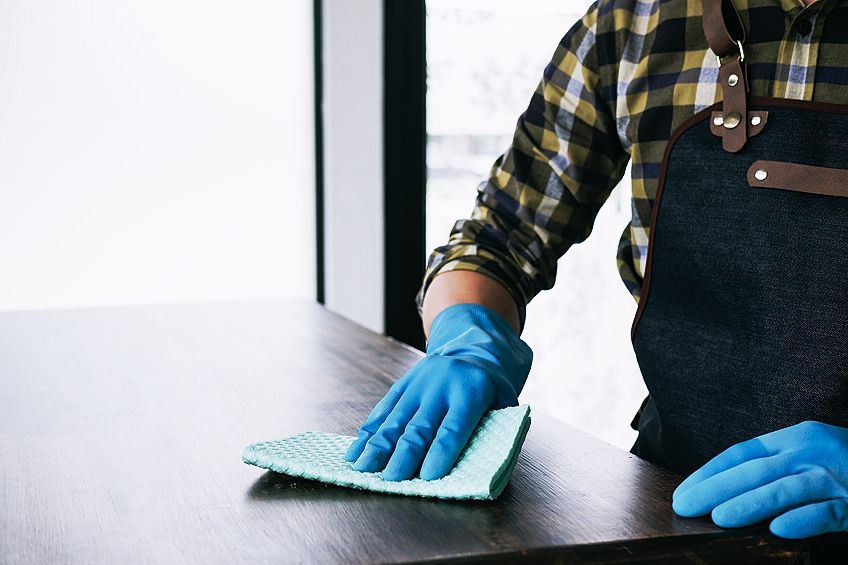
Paint thinner may be substituted with mineral spirits if you find that you are sensitive to paint thinner fumes. When it comes to removing oil-based paint off hardwood, paint thinner is quite effective, but it is of minimal use on water-based paints.
Tips and Tricks for Removing Acrylic Paint from Wood
Although getting rid of acrylic paint from wood is a simple process, with the right tips you can make the whole process even easier. The tips to follow are explained below:
Follow Instructions
Before you begin to get rid of acrylic paint off wood, make sure to take time to read and understand the instructions of the method you are using. You can generally find directions for utilizing whatever product you are using on the label of the container it came in. The guidelines offer all necessary information on using the products correctly.
A paint remover will come with instructions on how to use the product printed on the packaging. Only use items that have been specifically designed for wooden surfaces. Others may damage wither the wood or its finish.
Work in a Well-Ventilated Area
Make sure that you are in a well-ventilated environment. You should also make sure to leave the doors and windows open to allow natural air to flow in and out. It is recommended to work outdoors if possible. A fan might also be used to vent the fumes, allowing the breeze to carry them away.
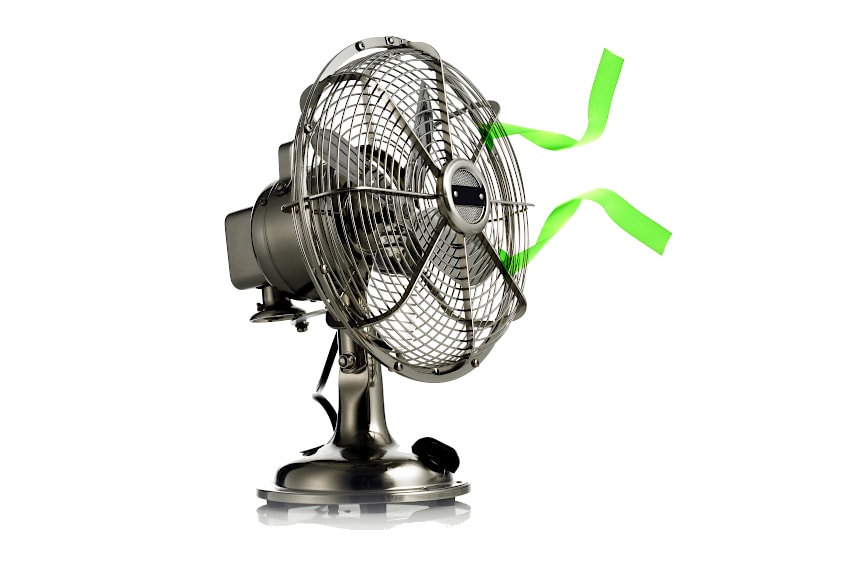
Do Not Mix Cleaning Solutions
When cleaning acrylic paint off wood, you must never mix the cleaning solutions. Mixing the solutions can cause chemical reactions to occur which might cause damage to your wooden surfaces.
Use Cleaning Solutions Only on the Surfaces with Acrylic Paint
When getting rid of acrylic paint from your wooden surfaces, make sure to never clean beyond the area that has been damaged. Cleaning bare wood with a paint remover or any cleaning solution may cause the wood to become discolored. Instead, only the stained area must be cleaned.
Acrylic paint is an extremely popular medium for use in a vast variety of settings. Occasionally, things will not go as expected, and you may need to get acrylic paint off of wood after it has dried. There are several ways for removing acrylic paint off wooden surfaces that are both effective and inexpensive. We hope this post has helped you learn the most effective methods to get acrylic paint off wood, including what removes acrylic paint, how to remove dried acrylic paint from wood, get acrylic paint off hardwood floors, and the tips to follow.
Frequently Asked Questions
How to Get Rid of Dried Acrylic Paint?
Different methods can be used to remove dried acrylic paint from wood. You can use rubbing alcohol or denatured alcohol as well as paint solvents. You may also sand the wooden surface or use a heat gun to get rid of the acrylic paint. The procedure you choose can be determined by the size of acrylic paint stains on your surfaces as well as the readily available resources.
Can I Wash off Dried Acrylic Paints?
If properly dried, acrylic paint for woodwork becomes very durable, and therefore not easy to wash off. On the other hand, if the paint has not completely dried or no textile medium has been added, it can easily be washed off after being subjected to paint-removing solvents.
Will Acrylic Paint Wash off Wood if It Rains?
Because acrylic paint is water-based, any freshly applied acrylic paint will wash away. When the paint has cured, it becomes a little more water-resistant. However, after time, it will crumble and peel away from the surface if not sealed properly.
Which Paint Remover Is the Most Effective for Wood?
To remove cured paint from wood, paint strippers are the most effective option. They are simple to operate and have a quick response time. Paint strippers can clear a wooden surface that has been discolored with acrylics in a matter of minutes or seconds. You can apply paint stripper with a clean rag and wipe it over the affected area to remove the stain. You can also brush it on, cover it with cling film, and leave it until the paint starts to bubble and lift. Then, gently scrape the paint off with a spatula.
Is Vinegar Effective in Removing Paint from Wood?
When it comes to getting acrylic paint off wood, vinegar alone isn’t nearly as effective as it may be. However, it may loosen the acrylic paint for woodwork so that other procedures can work more easily. Also beneficial is the fact that it is not toxic and does not emit any poisonous fumes throughout the cleaning process.
How to Remove Acrylic Paint From Wood?
To get acrylic paint off wood, a variety of techniques may be used. When it comes to removing acrylic paint, you may use ammonia solution, rubbing alcohol, and mild detergent soap as effective methods. In addition to sanding, other ways of removing the acrylic paint may be used as well.
Larissa Meyer is a 32-year-old mother from Michigan and creative spirit since childhood. Her passion for painting and drawing has led her to an education as an illustrator and a career as a freelance graphic designer. She has a Bachelor of Fine Arts in Illustration and a degree in Graphic Design. Larissa is a talented artist who is able to master a wide range of styles and techniques to bring her artistic vision to life. Her greatest passion is currently fluid painting and epoxy resin art. Larissa’s love for art and her knowledge and experience in illustration make her the perfect Creative Director for our fluid-painting.com team. She is the creative head of our team and shares her passion and knowledge with our community through articles and tutorials.
As a mother of a 2-year-old daughter, Larissa also understands the importance of fostering creativity in early childhood. She uses her experience and knowledge to help other parents inspire their children and develop their artistic skills as well.
Learn more about Larissa Meyer and about us.

